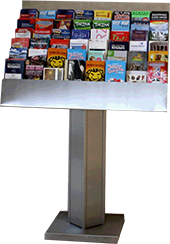The first church on the site of the Heiliggeistkirche was built as early as the 13th century as a small Romanesque basilica "Zum Heiligen Geiste". It was probably destroyed by fire at the beginning of the 14th century and replaced by an early Gothic church. The opening mass for the foundation of the University of Heidelberg took place in this church on 18 October 1386.
Only 12 years later, under Ruprecht III, the church choir was demolished and replaced by a larger one. Thus the year 1398 is considered the year of the foundation of the Heiliggeistkirche.
In 1410, the construction of the hall choir was completed and under Ruprecht's son Ludwig III, the nave was built in 1441 with the tower underneath.
Under Ludwig V. (1508 - 1544) the tower was continued and completed.
In the course of the Reformation the church changed several times between Lutheran and Reformed-Calvinist denominations. In 1563 the Heidelberg Catechism was established as a Reformed confession.
With the conquest of Heidelberg by Catholic troops in the Thirty Years' War, the city and the church became Catholic for many years.
In 1693, the church was severely destroyed in the course of the Palatinate and Orléans War of Succession. Almost all the tombstones of the Electors of the Palatinate were lost. However, the tombstone of the church founder Ruprecht II has been preserved.

selected Highlight
Proven content with highest relevance and topicality
It was Ludwig III who laid the foundation stone for the later famous Palatine Library, the BIBLIOTECA PALATINA, by having the first books placed on the galleries.
Pope Gregory XV had the BIBLIOTECA PALATINA brought to Rome in 1623 as spoils of war. It was not until 1816 that 885 of the once over 5000 books and 3524 manuscripts were to return to Heidelberg. The rest is still in the Vatican today.
The constant changes of denomination had the consequence that both the Catholic and Protestant side asserted claims to the church. This led to the fact that for more than two centuries the church was separated by a dividing wall, in the choir room the Catholic mass was celebrated and in the nave the Protestant service.
It was only thanks to the tireless efforts of the Holy Spirit Pastor and later prelate, Pastor Hermann Maas, that an agreement with the Catholic Church was reached. In 1936 the church became the property of the Protestant Church in Baden. The feast of St. John in 1936 was the first service that took place in a church without a dividing wall.
Pick up this flyer at the MPM brochure stand in the hotel lobby or contact reception.
